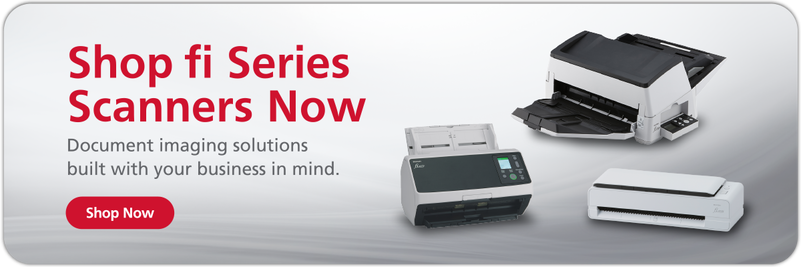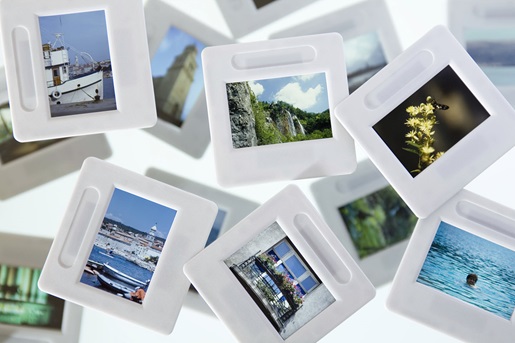Get the most out of your scanner with this guide.
Depending on your end goals, the act of scanning a document is sometimes just the first step in a long digital process. When it comes to getting your scans into Microsoft Word, there are many questions you need to ask yourself. Is your scan primarily an image file or a text document? Did you scan it using your phone or a dedicated scanning device? Where in the world is that file saved on your computer? Not to worry, this five-step guide will show you exactly how to scan a document into Word no matter what kind of documents you’re working with.
Got something else that needs scanning? Check out our comprehensive guide, "How to Scan Just About Anything."

Why scan documents into Microsoft Word?
There are any number of reasons you might need to know how to scan a document into Word. If the item you’re scanning is still a work in progress and you only have a hard copy, getting it into Word is a necessary step in the revision process. Putting a document in Word also allows you to insert text, charts, graphs, and photos to make your work more visually interesting. Or you might be working with a client or service that only accepts documents in Word format.
How to scan a document into Word
Let’s dive into our step-by-step guide to getting your scanned documents into Microsoft Word.
Step 1: Scan your document
In this guide, we’re assuming you already know the basics of how to use your scanner of choice. Whether you’re using a dedicated scanner or you have a preferred scanner app on your iPhone or Android mobile device, the first step in the process of getting any document into Microsoft Word is, you guessed it, scanning the document itself.
One advantage of having a dedicated scanner is that you’ll have access to tools that streamline the journey from point A (hard copy) to point B (Word document). Features like optical character recognition (OCR) will enable you to automatically convert scanned documents into searchable and editable text files, for example.
Did You Know? The RICOH fi-8170 scan up to 70 pages per minute and hold up to 100 sheets in its automatic document feeder. Click here to learn more.
Step 2: Decide what you need to do with it
The next step is more of a planning phase. In order to effectively scan your document into Word, it will help to determine what kind of document you’re working with and what you’ll need to do with it. In this guide, we’re going to look at two specific cases for scanning to Microsoft Word: static images and editable text. Scanning an image you plan to use in a brochure or press release? Step three will be more important for you. Scanning a text-heavy document you’ll need to edit or amend using a word processor? Skip to step four. Or if you’re dealing with a combination of images and text, read on in order.
Step 3: Importing images
If you’ve completed step one, your scanned file is probably saved on your computer as a .JPG or .PNG file. If it’s saved as a PDF, take a moment to convert the scan file to one of those two image formats (Open the file, select either Export or Save as, and select .JPG or .PNG from the dropdown list). Depending on your scan settings and the kind of software you’re using, you may need to take a moment to locate the file and make sure you know where it’s stored on your machine. Then open a Word document and place your cursor where you’d like the image to appear. Navigate to Insert and then Pictures in the top menu, select your scanned image file, and click Insert.
Step 4: Importing editable text
The reason you need to convert image files to .JPG or .PNG format is that importing .PDF files tells Microsoft Word that there is likely text involved. To import a scanned document as editable text click File and then Open. Once you navigate to and select your .PDF scan, a pop-up box will appear asking for permission to convert your file into an editable Word document. Click OK, and Microsoft Word will automatically begin the conversion process
Step 5: Work with your scan in Word
If you’ve been following along with the first four steps, you should be looking at your scanned documents imported safely into Microsoft Word. At this point in the process, you can edit and manipulate your scanned text and images the same way you would in any other Word document. Once you begin working with your scans, though, it will become clear that higher quality scans make for better quality images and text. Using a reliable and precise dedicated scanner will improve the clarity and accuracy of your scanned documents, making for an effortless experience once you import them to Microsoft Word.
Did You Know?The RICOH fi-8170 comes with PaperStream, our market-leading scanning software suite that offers image correction, image clean-up, OCR, document separation, indexing, automatic file naming, easy navigation, etc. Click here to learn more.
When to scan a document into Word
So when should you scan into Word rather than leaving your imported files as .JPGs and .PNGs? The answer will depend on your scans and what you plan to do with them, but there are a few clear use cases:
- The document is still a work in progress and you only have a hard copy. This might be the case if it’s an archival file getting its first update in years or decades.
- When you want to enhance entirely text-based documents to include images, charts, and graphs.
- When you want to organize images in a single file, rather than a folder full of .PNGs, and use text to provide identifying details about each image.
Our recommendation: RICOH fi-8170 and ScanSnap iX1600
Those in the market for a high-speed document scanner have no shortage of options. We take great pride in having spent the last 50+ years researching, designing, and developing some of the most advanced and powerful electronics in the world, including our professional grade fi and SP series of scanners.
Built to purpose for the most demanding document handling jobs, fi and SP scanners are capable of processing tens of thousands of pages per day at the highest levels of accuracy. Their intuitive integration capabilities with all existing work suites minimize time-to-value for businesses looking to invest in tools that will pay dividends for years to come.
That’s why we recommend the RICOH fi-8170 for any business professional looking to scan documents into Microsoft Word. The compact scanner can handle up to 70 pages a minute and up to 10,000 sheets a day, with a 100-sheet loading capacity. Paper protection capabilities prevent damage to original copies, and ultrasonic multi-feed detection offers security against lost images. Most importantly, the fi-8170 includes automatic skew reduction to ensure each scan is perfectly aligned and complete, and a robust suite of scanning software including image enhancement, quick image capture, and indexing options like OCR.
For home use, the ScanSnap iX1600 is a great option for scanning documents into Microsoft Word. Features include 40 ppm speeds, a 50-sheet automatic document feeder, a stable feed supported by an ultrasonic sensor and high-quality brake roller, and automatic streak reduction for the cleanest image every time. The ScanSnap software suite makes it simple and easy to scan documents into Word. Click here to learn more or shop the rest of our scanner line.
Note: Information and external links are provided for your convenience and for educational purposes only, and shall not be construed, or relied upon, as legal or financial advice. PFU America, Inc. makes no representations about the contents, features, or specifications on such third-party sites, software, and/or offerings (collectively “Third-Party Offerings”) and shall not be responsible for any loss or damage that may arise from your use of such Third-Party Offerings. Please consult with a licensed professional regarding your specific situation as regulations may be subject to change.












